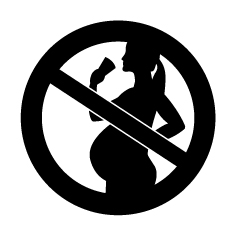
Estudios científicos
Inhibition of gap junctional intercellular communication and activation of mitogen-activated protein kinase by tumor-promoting organic peroxides and protection by resveratrol
Abstract:
Dicumyl peroxide (di-CuOOH) and benzoyl peroxide (BzOOH) act as tumor promoters in SENCAR mice, whereas di-tert-butylhydroperoxide does not. Tumor promotion requires the removal of growth suppression by inhibition of gap junctional intercellular communication (GJIC) and the induction of mitogenic intracellular pathways. We showed that di-CuOOH and BzOOH both reversibly inhibited GJIC and transiently activated mitogen-activated protein kinase, specifically, the extracellular receptor kinase at noncytotoxic conditions in WB-F344 rat liver epithelial cells, whereas the non-tumor-promoting di-tert-butylhydroperoxide did not inhibit GJIC or activate extracellular receptor kinase. di-CuOOH but not BzOOH inhibited GJIC through a phosphatidylcholine-specific phospholipase C-dependent mechanism. N-acetylcysteine (NAC) was needed to prevent a cytotoxic, glutathione-depleting effect of BzOOH, whereas di-CuOOH was noncytotoxic and did not alter glutathione levels at all doses and times tested. Pretreatment of WB-F344 cells with resveratrol, a polyphenolic antioxidant present in red wine, prevented at physiological doses the inhibition of GJIC by di-CuOOH but not from BzOOH and was effective in significantly preventing extracellular receptor kinase activation by both peroxides. NAC did not prevent any of the peroxide effects on either GJIC or extracellular receptor kinase, suggesting a specific antioxidant effect of resveratrol.
Comentarios divulgativos:
El peróxido de dicumilo (di-CuOOH) y el peróxido de benzoilo (BzOOH) actúan como promotores de tumores en ratones SENČAR, mientras que di-terc-Butilhidroperóxido no lo hace. La promoción del tumor requiere la eliminación de la supresión del crecimiento por inhibición de la falta de comunicación de la unión intercelular (GJIC) y la inducción de las vías intracelulares mitogénicas. Demostramos que el di-CuOOH y BzOOH activan la proteína quinasa activada por mitógenos, específicamente, el receptor de la cinasa extracelular en condiciones no citotóxicas en hígado de rata WB-F344, mientras que en las no tumorales el di-terc- Butilhidroperóxido no inhibió GJIC El pretratamiento de las células WB-F344 con resveratrol, un antioxidante presente en el vino tinto, impidió a dosis fisiológicas la inhibición de GJIC por di-CuOOH pero no de BzOOH y fue eficaz en la prevención de los receptores extracelulares de manera significativa a la activación de la cinasa por ambos peróxidos.







